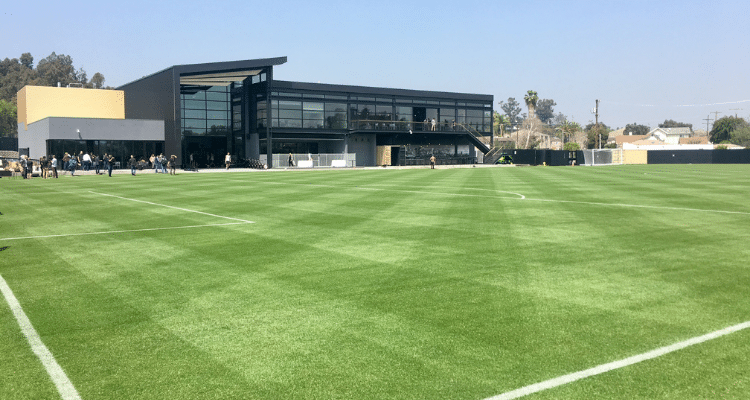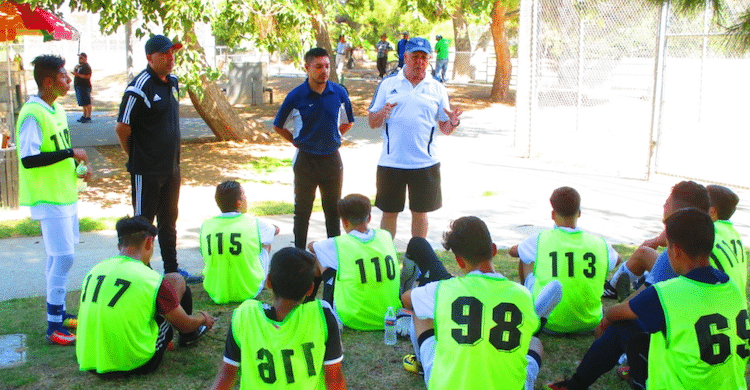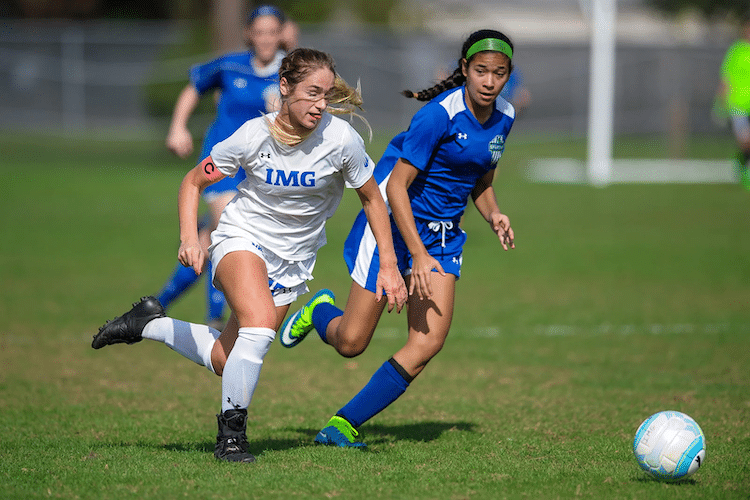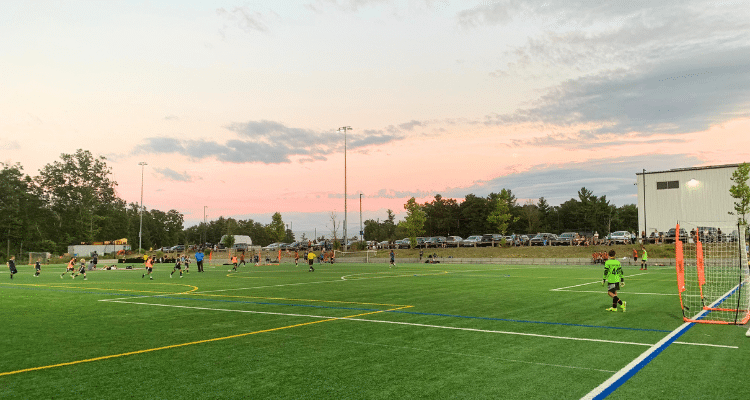Why Are Some States Better at Soccer?
I’m in New Hampshire and compared to States like New York and California, we are inferior as far as the quality and number of good players. We know it and I think other states know it. This begs the question, why are some states better at soccer?
Key Takeaways From This Article:
- There are demographic factors that influence the quantity and quality of youth soccer teams.
- Location and weather also serve as factors that contribute to the quality of play.
- Upbringing and culture are factors. Some families live and breathe soccer while others love hockey, baseball, basketball, American football, or another sport.
We’ll address some factors that influence why one state is better at soccer than another. With that said, it doesn’t really shouldn’t matter to you unless you’re family is planning to move just for soccer purposes. As a player, you need to work with what you have and in the environment you are in. If you always wish something was one way or another, you’ll lose focus of what’s in front of you!
Soccer Popularity by State

Soccer has been growing in popularity across the United States, but some states have a greater affinity for the sport than others. Year after year, the top states (in no particular order) for youth soccer are:
- California
- Texas
- Florida
- Virginia
- New York
- New Jersey
- Georgia
- Colorado
- Ohio
- Missouri
- North Carolina
Now, depending on some factors like gender, who makes it to pros, etc., you can bump or remove some states. But, generally, these states produce a high number of quality youth players and teams.
It’s also worth noting that soccer popularity can vary within a state as well. For example, in California, Los Angeles has a much higher concentration of soccer players and clubs than other areas of the state. Similarly, in Texas, the Dallas and Houston areas have a higher number of soccer players and teams compared to other parts of the state.
Influence of Demographics

Population Density
One factor that may contribute to the success of soccer in certain states is population density. States with higher population densities tend to have more soccer fields and facilities, which can lead to more opportunities for young players to develop their skills.
Additionally, in states with higher population densities, there may be more interest in soccer among the local population, which can lead to greater support for local teams and leagues.
I see this first-hand, there are many more teams and clubs when I drive over the border from New Hampshire to Massachusetts. The population is higher and Boston is a large metro so it only makes sense to support the youth with more opportunities because the demand is there. Up here, there are kids driving two hours for U14 practices.
Ethnic Diversity
Another factor that may influence the success of soccer in certain states is ethnic diversity. Soccer is a sport that is popular in many countries around the world, and immigrants from these countries may bring their love of the game with them when they move to the United States.
For example, cities like L.A. and Dallas have a high population of Latino families. Being from South America or other parts of the world, soccer is watched and played at an early age. This continues as the kids get older and they have more resources at their disposal.
States with higher levels of ethnic diversity may therefore have more soccer fans and players, which can lead to a more vibrant soccer culture.
Influence of Weather

The weather has a significant impact on youth soccer. In the northeast, our team trains 3-4 times per week and then breaks for winter, and will continue end of March or early April when the snow melts. For the three months, we have to move indoors, space is limited and facilities are expensive.
On the flip side, regions in the south can train year-round. They don’t experience 10 degrees with six inches of snow on the field. This gives these states a big leg up on the amount they are able to practice.
Youth Participation and Development Programs
U.S. Soccer and other youth soccer programs have been instrumental in identifying and nurturing young soccer talent in the U.S. Youth leagues like ECNL, MLS NEXT, and Girls Academy have established a platform for talented players to compete.
However, prior to kids getting to the youth clubs, town rec, and travel programs play a significant part in developing players. Although it is less competitive, it’s crucial that each organization provides a fair shot for every child to at least try various sports.
For inner cities, we need to make the families aware of the different offerings in their area. Kids who try a sport when they are young and find success earlier on will stick with it longer.
The biggest downside of our youth programs is the pay-to-play system in club soccer. Kids are being filtered out based on their economic status. Of course, clubs advertise that there are scholarships but some kids can’t even get rides! I would love to see a system where we identify talented players and provide them with an environment to showcase their skills on a national level.
Investment in Soccer Infrastructure

The availability of quality playing fields, training facilities, and professional coaching can make all the difference in a player’s development. Additionally, investment in youth leagues and academies can help identify and nurture talented young players.
Some states have invested heavily in soccer infrastructure, which has contributed to their success in the sport. For example, California has a large number of soccer fields and top-notch training facilities, which has helped produce many talented players. Another example is Texas and New York, which has invested in youth soccer leagues and academies, leading to the development of many skilled players.
Investment in soccer infrastructure is not just limited to the public sector. Private investment in soccer academies and clubs can also contribute to a state’s success in the sport. For example, the New York Red Bulls Academy has produced many talented players, thanks to its state-of-the-art facilities and professional coaching staff.
In many regions, soccer and American football are shared resources. Soccer is usually played on a football field. For this reason, field time is usually split between the two sports which can cause teams to practice less.
Piggy-Backing Off Professional Teams
One way to measure the success of soccer in a state is by looking at the performance of the local professional teams.
More than ever on the boy’s side, MLS NEXT academy teams have direct relationships with the MLS teams which provide state-of-the-art training and facilities. Depending on who you ask, this can be a great thing or too much for kids.
Professional soccer teams can have a significant impact on the growth of soccer in a state. For example, the Seattle Sounders FC, one of the most successful and popular professional soccer teams in the United States, has helped to grow the sport in Washington state. The team has consistently ranked among the top in attendance in Major League Soccer and has won the MLS Cup twice. As a by-product, Seattle has many competitive youth leagues and teams.
Cultural Factors and Soccer
I touched on it above but one of the most significant cultural factors that influence soccer’s popularity is the presence of immigrant communities. Many states with successful soccer programs, such as California, Texas, and Florida, have large immigrant populations from countries where soccer is a popular sport, such as Mexico, Brazil, and Argentina.
These communities bring their love of soccer with them when they move to the U.S. and often create their own soccer leagues and teams. This creates a culture of soccer within these communities that can spread to the wider population.
Another cultural factor that can influence soccer’s popularity is the overall sports culture in a particular state. In some states, such as Texas and Florida, high school sports are a significant part of the culture, and soccer is often included in the mix. Many kids want to stay in their high school to play rather than move elsewhere to attend a prep school in another state.
In other states, such as Wyoming and Montana, high school sports are less emphasized, and soccer may not be as popular.
Final Thoughts
From my lens, soccer in the U.S. has gained significant traction in the past few years. I’m seeing more fields being filled with very talented youth players and teams.
In my opinion, there are some states that are more conducive to finding success in the sport. States like California and Florida have a high number of different ethnicities, populated cities, and warm weather. These factors contribute greatly to the culture and the amount they can spend playing the beautiful game!
I don’t see soccer slowing down anytime soon. In fact, I do see it overtaking baseball and hockey eventually. Until then, let’s introduce the sport to as many kids as possible and provide them with a safe environment to have fun! This is what it’s all about.

Written By: SoccerNovo
SoccerNovo is an independent youth soccer media brand built to help parents, players, and coaches better understand the game and the pathways available in U.S. soccer. Our mission is to make youth soccer simpler, clearer, and more accessible for everyone involved in it.
Let’s connect





